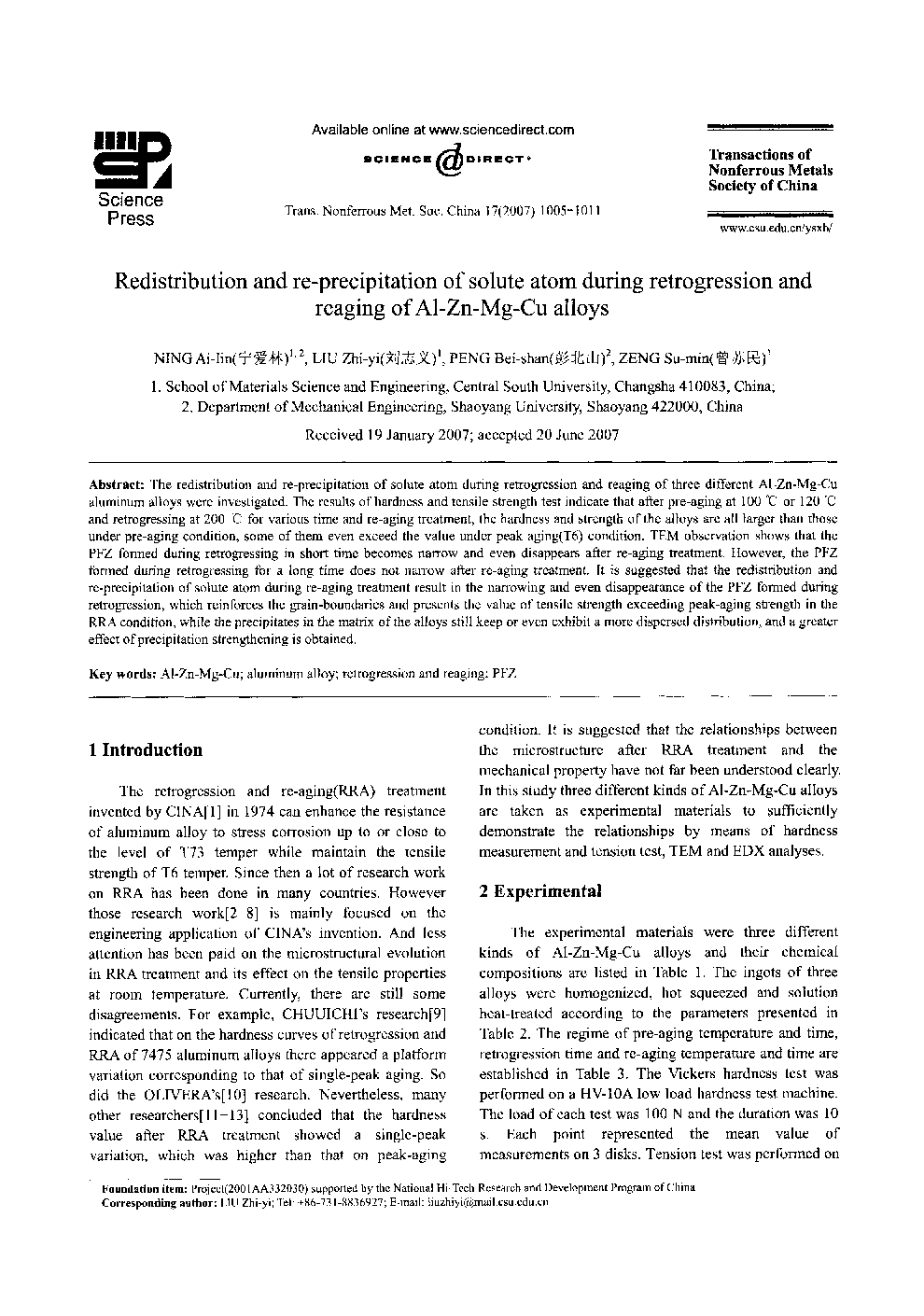| Article ID | Journal | Published Year | Pages | File Type |
|---|---|---|---|---|
| 1639262 | Transactions of Nonferrous Metals Society of China | 2007 | 7 Pages |
Abstract
The redistribution and re-precipitation of solute atom during retrogression and reaging of three different Al-Zn-Mg-Cu aluminum alloys were investigated. The results of hardness and tensile strength test indicate that after pre-aging at 100 °C or 120 °C and retrogressing at 200 °C for various time and re-aging treatment, the hardness and strength of the alloys are all larger than those under pre-aging condition, some of them even exceed the value under peak aging(T6) condition. TEM observation shows that the PFZ formed during retrogressing in short time becomes narrow and even disappears after re-aging treatment. However, the PFZ formed during retrogressing for a long time does not narrow after re-aging treatment. It is suggested that the redistribution and re-precipitation of solute atom during re-aging treatment result in the narrowing and even disappearance of the PFZ formed during retrogression, which reinforces the grain-boundaries and presents the value of tensile strength exceeding peak-aging strength in the RRA condition, while the precipitates in the matrix of the alloys still keep or even exhibit a more dispersed distribution, and a greater effect of precipitation strengthening is obtained.
Keywords
Related Topics
Physical Sciences and Engineering
Materials Science
Metals and Alloys
Authors
NING Ai-lin, LIU Zhi-yi, PENG Bei-shan, ZENG Su-min,
